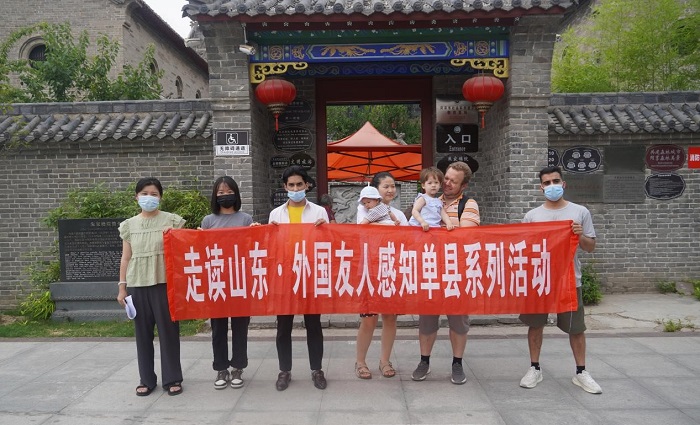Expats discover Shandong's cultural legacy at Zhujia Courtyard
Shanxian county – located in Heze city, in East China's Shandong province – recently organized an activity called Exploring Shanxian County with Foreign Friends, inviting expats living and working in the region to visit the renowned ancient Zhujia Courtyard there.

Expats take part in a cultural activity in Shandong. [Photo by Wang Xiaolan for chinadaily.com.cn]
The Zhu Family Courtyard is a complex of buildings from the Ming and Qing dynasties (1368-1911). At its peak, more than 200 houses and bungalows covered about a hundred mu (6.67 hectares) of land. However, now only a few buildings remain. In 2011, it was converted into the Shanxian County Folk Museum.
The expats first visited the Zhu family historical records exhibition hall, showcasing the family's long history, including their family tree and prominent historical figures.
One such figure was Zhu Tinghuan, a seventh-generation descendant who served as governor of Luzhou Fu, a historical administrative division of China.
Another notable figure was Zhu Shiqin, a fifteenth-generation descendant who held a position in the National Government of the Republic of China and gave his life for the country during the War of Resistance against Japanese Aggression (1931-45).
At the exhibition hall displaying wedding customs, a collection of clay sculptures caught the eye of the visitors.
These sculptures recreate traditional Chinese wedding customs, consisting of seven steps: The proposal, matchmaking, engagement, wedding preparations, welcoming the bride, the wedding ceremony and entering the bridal chamber.
"The wedding customs demonstrate the importance of etiquette in Chinese culture," said a visitor from Germany.
Additionally, at the showroom of the counting house, expats were introduced to ancient Chinese measuring instruments like the dou. It's a tool used in the agriculture, agronomy and commodity markets to measure grain, dried beans and more. The visitors also looked at the cheng, a physical device used to determine the weight or mass of items.
These tools were essential for trade and commerce in ancient China and led to many useful inventions still relevant to people's daily lives today. (Edited by Zhou Yunlai)








